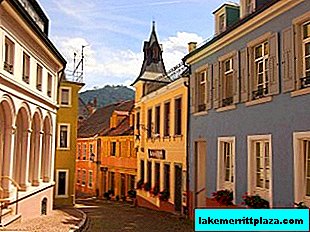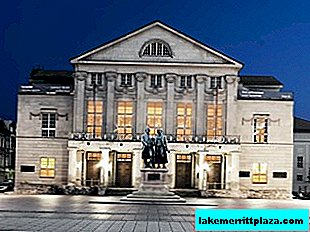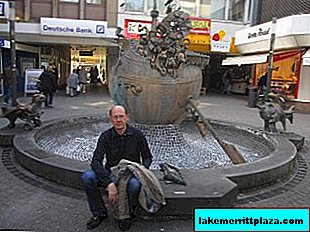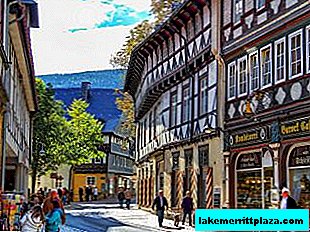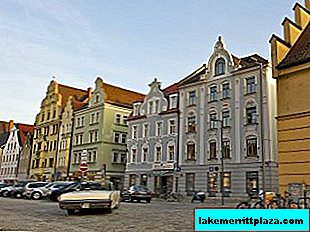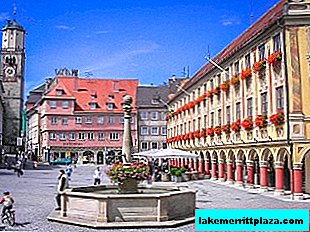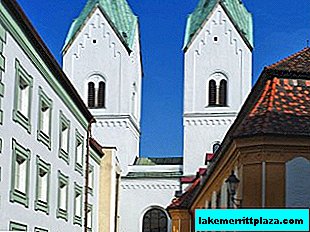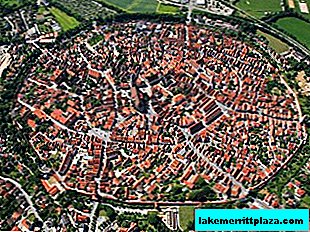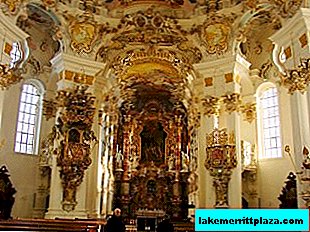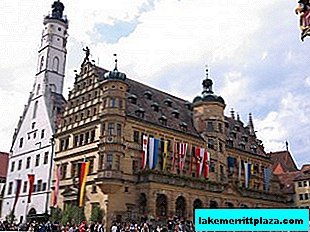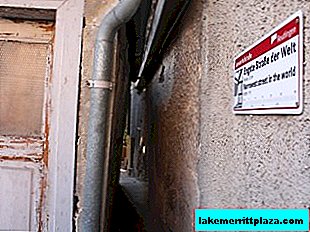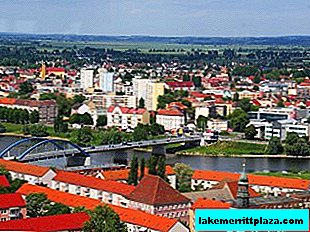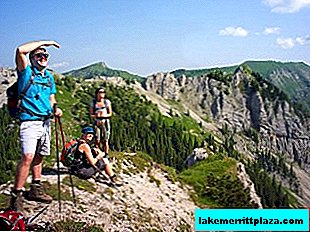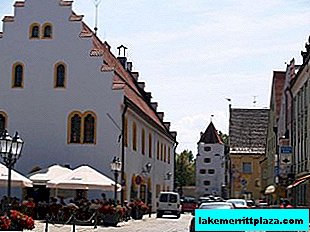I share with you guides in Germany.

Germany
Germany is a state in the center of Europe, a developed power with an exemplary domestic political structure, one of the recognized leaders in the global economy. A country with an original culture of regions, with a great history and unshakable traditions. Beautiful land with protected forests, mountains and valleys, with excellent roads, well-groomed cities and carefully preserved monuments.






 Potsdam
Potsdam
 Goslar
Goslar
 Berlin
Berlin
 Dresden
Dresden
 Memmingen
Memmingen
 Fantasy land
Fantasy land
 Koln
Koln
 Munich
Munich
 Wuppertal
Wuppertal
 Rothenburg ob der Tauber
Rothenburg ob der Tauber
 Romantic road
Romantic road
 Ulm
Ulm
 Hamburg
Hamburg
 Friedberg
Friedberg
 Frankfurt
Frankfurt
 Erfurt
Erfurt
 Regensburg
Regensburg
 Nuremberg
Nuremberg
 Baden Baden
Baden Baden
 Fussen
Fussen
 Potsdam
Potsdam
 Goslar
Goslar
 Berlin
Berlin
 Dresden
Dresden
 Memmingen
Memmingen
 Fantasy land
Fantasy land
 Koln
Koln
 Munich
Munich
 Wuppertal
Wuppertal
 Rothenburg ob der Tauber
Rothenburg ob der Tauber
 Romantic road
Romantic road
 Ulm
Ulm
 Hamburg
Hamburg
 Friedberg
Friedberg
 Frankfurt
Frankfurt
 Erfurt
Erfurt
 Regensburg
Regensburg
 Nuremberg
Nuremberg
 Baden Baden
Baden Baden
 Fussen
Fussen
 Augsburg
Augsburg
 Dusseldorf
Dusseldorf
 Wurzburg
Wurzburg
 Stuttgart
Stuttgart
Munich

Munich (München), photo by Javiera Muñoz D
Munich (München) - the capital of the "free state" of Bavaria, a metropolis with a special mentality. The appearance of the city was formed under the influence of French, Dutch, Italian architectural traditions. The heart of Munich is Marienplatz Square. The oldest Munich temple - Peterskirche; The most impressive modern facility is the Olympic Park. There are more than 70 museums in Munich: from the ancient Glyptothek to the BMW Automobile Museum. The most fun and crowded holiday is the famous Oktoberfest beer festival.
Munich Travel Guide →Dresden

Dresden by Pascal POGGI
Dresden is the administrative center of Saxony. By the beauty of architecture, this city on the Elbe competes with Florence. It is hard to believe, but at the end of World War II Dresden was virtually destroyed, and later reborn again. The Zwinger residence, the Semperoper building, the baroque Frauenkirche cathedral were recreated from the ruins; A serious restoration was needed for the Dresden Castle. The symbol of Dresden is the Gallery, where the treasure of the Renaissance is exhibited - the legendary Sistine Madonna.
Dresden Travel Guide →Berlin

Berlin, photo by Tobias Nordhausen
Berlin (Berlin) - the capital of modern Germany and the former East Germany, the largest metropolis, having survived many events and upheavals. The Brandenburg Gate is considered its main symbol - the historic Arc de Triomphe, reminiscent of the Propylaea. Charlottenburg Castle is recognized as a striking example of German baroque. The Berlin Art Gallery is one of the most important German museums. The main cultural event of the city is the largest public film festival "Berlinale".
Berlin Travel Guide →Koln

Cologne Cathedral
Cologne (Köln) is a city founded by the Romans in 38 BC, the cultural and tourist center of North Rhine-Westphalia. Its main symbol is Cologne Cathedral - a grandiose Gothic church with pointed 157-meter towers, included in the UNESCO list. The most popular museum is the Farin House, the Museum of Spirits. The Cologne Town Hall is famous for its sculptural "collection": 124 figures of historical figures and saints are installed on its tower. The best city views open from the cable car laid over the Rhine. The most beautiful monument of Cologne engineering architecture is the openwork Hohenzollern bridge.
Cologne Travel Guide →Dusseldorf

Düsseldorf, photo by Benjamin Ballande
Düsseldorf (Düsseldorf) - a city of metallurgists, bankers, car manufacturers and artists, built at the confluence of the Ruhr and Düssel. There are buildings of different eras: from Altstadt beer halls, which is also called the "Longest Bar in the World", to Medienhafen - the Architectural Zoo. But the whole architecture of Dusseldorf is sustained in a true German spirit. The city is famous for its beautiful parks, Gothic temples, grandiose modern skyscrapers and unique street sculptures. It is recognized as the center of the fashion industry and shopping: world-famous "fashion weeks" take place here, and luxury shops operate on Königsallee Boulevard. The architectural symbols of Dusseldorf are the Castle Tower of the XIV century. and Basilica of St. Lambert.
Dusseldorf Travel Guide →Nuremberg

Nuremberg (Nürnberg)
Nürnberg (Nürnberg) - the largest city in the historical region of Franconia, its informal cultural and economic center. It was founded in the XI century, reached its peak by 1835, was destroyed at the end of World War II and was soon restored. The fortifications of Nuremberg surrounding the old center were built in 1452. The wall is about 5 km long, numerous gates and the gate tower Konigstorturm have been preserved. The largest church is the Gothic Lorenzkirche. The oldest building is the Nassau House on Lorenzplatz Square (XII century). Walk the Nuremberg Historical Mile and discover its 35 major attractions.
Nuremberg Travel Guide →Neuschwanstein Castle
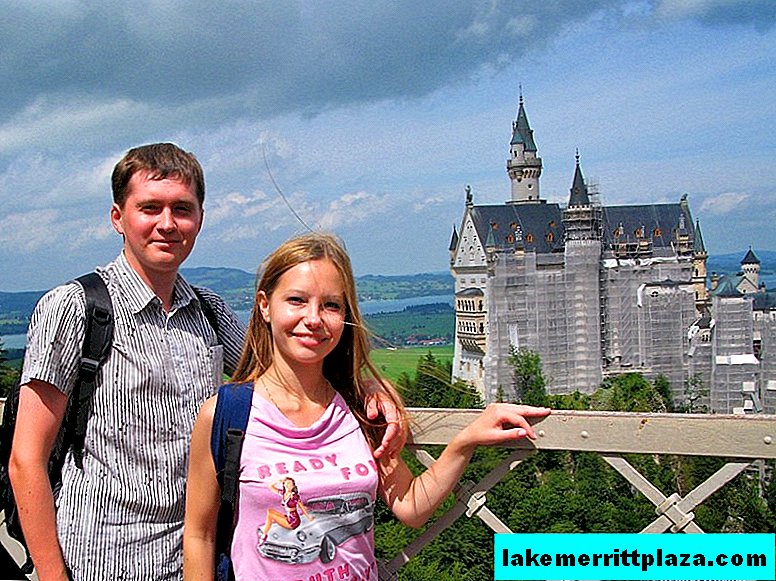
We are near Neuschwanstein Castle
Neuschwanstein Castle - the architectural pearl of the Alps, a symbol of Bavaria, built by the romantic king - Ludwig II. He stands on a mountain plateau near Füssen. "Swan Castle" Neuschwanstein is made of light sandstone, trimmed with Salzburg marble. The design of the building was developed by the court architect Eduard Riedel, Christian Jank painted the architectural plans. Ludwig of Bavaria personally reviewed and approved each sketch. The interior of the castle is painted with plots of ancient German legends, decorated with illustrations for Wagnerian operas. The center of the castle complex is the Hall of Singers, a high luxurious room decorated with frescoes based on the legend of Parsifal.
More about Neuschwanstein Castle →Romantic road
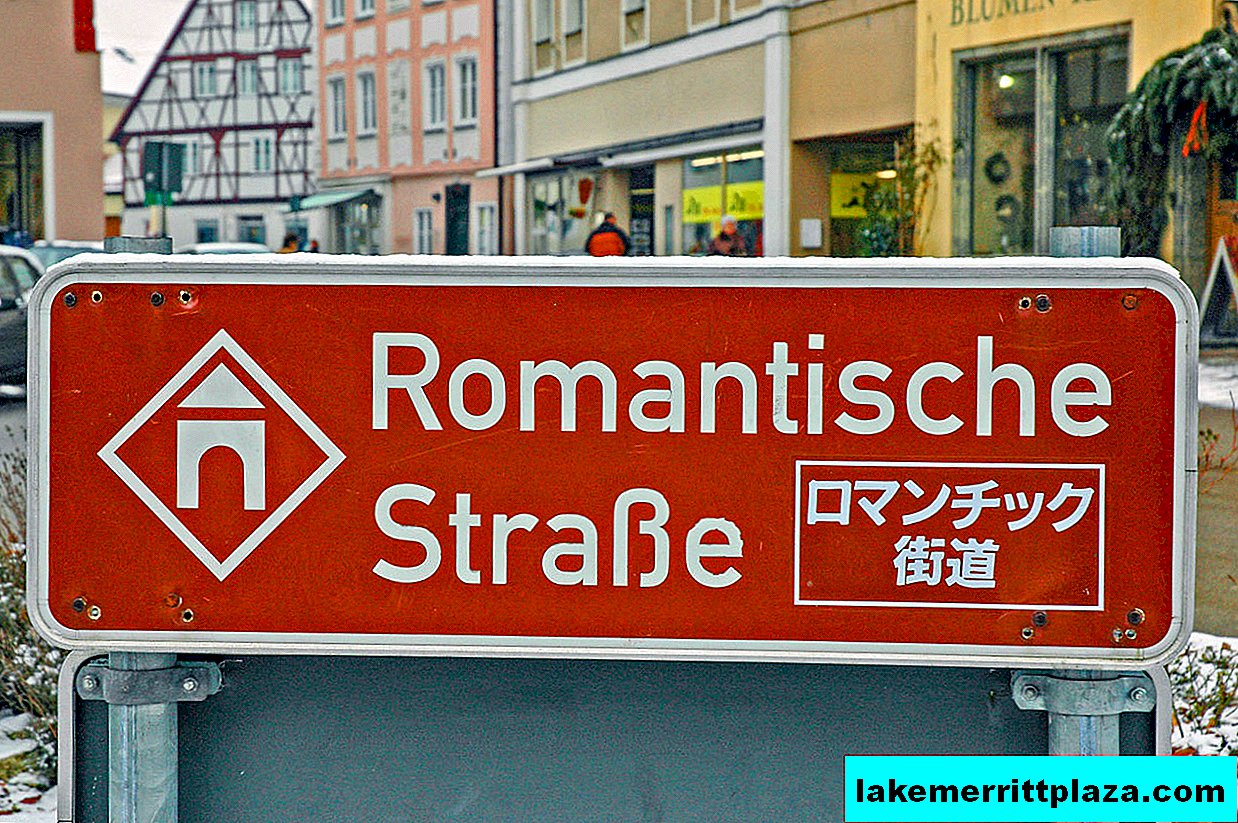
Romantic Road Photo Runemaker
The Romantic Road (Romantische Straße) is an informative tourist route with a length of more than 360 km, laid from Würzburg to Swabian Füssen. At each of its turns, new types of alpine foothills, beautiful landscapes, romantic old buildings open up. The main points of the route Romantische Straßeenstraße are 26 historical cities of Germany. Tourist buses run along the Romantic Road; You can go by car or move on foot and by bike, following the signs. Bicycles can be rented at many points on the route.
All about the Romantic Road →German fairy tale road

Bronze statue of the "Bremen Town Musicians" at the building of the Bremen Town Hall, photo by Gaby
Fairytale Road (Deutsche Märchenstraße) is a 600-kilometer tourist route laid through nature parks and landscape reserves, past German cities where famous storytellers created. Along the road there are monuments to the characters of legends and fairy tales of Germany. Deutsche Märchenstraße begins near Bremen, passes through Hesse and the lands of Lower Saxony, stretches along the Vogelsber Highlands, ends in Hanau, where the Brothers Grimm were born. Along the route, children's festivals, Fairy Tale Weeks, and open-air shows are often held.
About the German fairy tale road →Königstein

Königstein Fortress, photo by Norbert Kaiser
Königstein (Königstein) - the legendary impregnable fortress of the XI century, built on a rock above the Elbe in the vicinity of Dresden. It stands on a 240-meter high hill with steep slopes. The length of the defensive walls of Königstein is 550 m; they are considered the longest of the fortifications of Germany. Thanks to a well-thought-out location, powerful walls and a solid weapons arsenal, the Königstein fortress never obeyed the enemies. Today, the Military History Museum operates on its territory. At the foot of the Festung Königstein, on the very bank of the Elbe, stands the eponymous old town of Königstein.
About the fortress →Bamberg
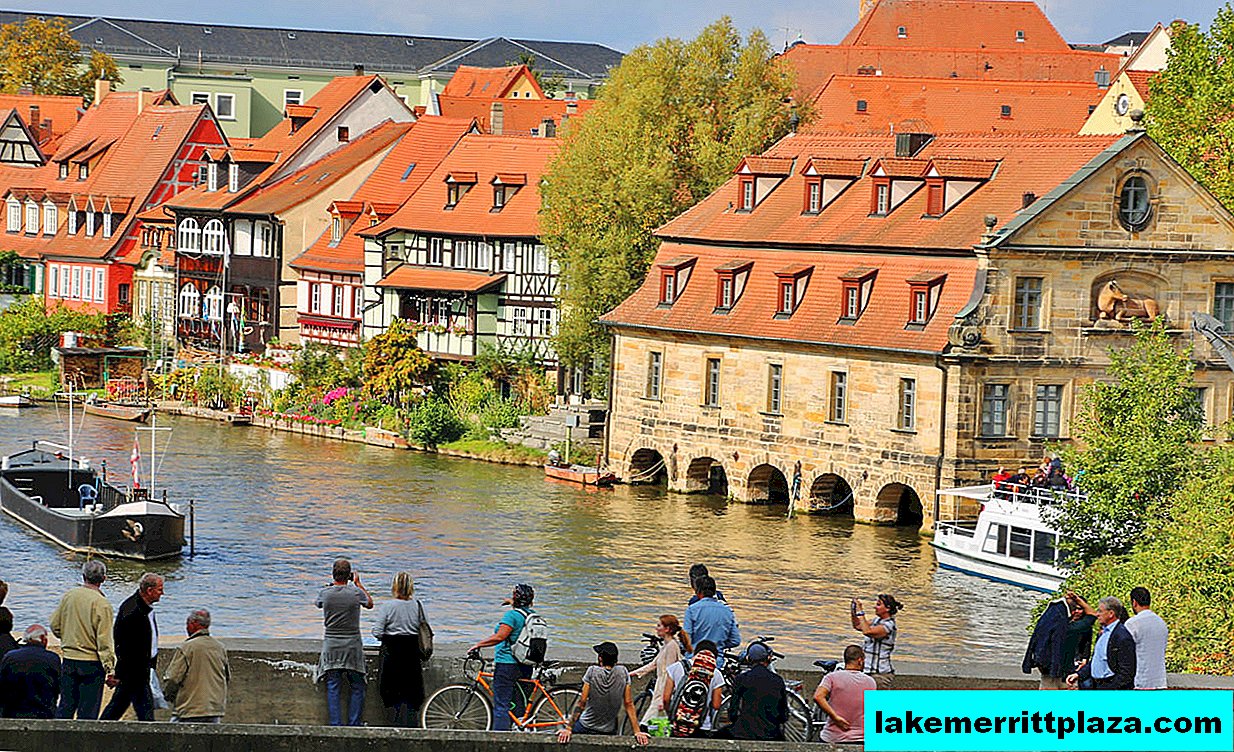
Bamberg, photo by Hugo von Schreck
Bamberg (Bamberg) in the Middle Ages was called "German Rome", often compared to Venice. The city stands on two branches of Regnitz, it is penetrated by a network of canals with bridges. Italian flavor, however, can only be found in one area - the former fishing village of Little Venice. There are half-timbered houses there, balconies are decorated with flower boxes, and instead of the road and sidewalks there is a canal along which the boats move. Bamberg was not destroyed in the war: the castle of Alterntern and the Cathedral, the Town Hall, and other medieval buildings retained their original appearance.
Read about Bamberg →Regensburg

Regensburg, photo by Ted-McGrath
Regensburg (Regensburg) - Bavarian city, founded in 79, with a medieval historical center, entirely entered into the UNESCO registry. It stands on the banks of Regen and the Danube. The famous sights of Regensburg are the Gothic St. Peter's Cathedral, the Church of St. Emmeram, Stone Bridge. The city is famous for its beer traditions and restaurants: there are three old breweries, more than 500 various catering establishments with Bavarian and international cuisine.
Regensburg Guide →Hamburg

Hamburg, photo by Mariano Mantel
Hamburg is a free city that was part of the Hanseatic League, a multinational metropolis, the largest port of Elba. It was founded in 811, it burned several times, was rebuilt, was destroyed by the war, and therefore has preserved a few medieval buildings. Most of its architectural monuments belong to the Neo-Renaissance and Neo-Gothic style. The elegant Town Hall and Lutheran Church of St. Nicholas were built in the 19th century, the old Fish Market has been operating since the beginning of the 18th century. A masterpiece of modern architecture, a UNESCO object - the “ship” Chilihaus in the port of Hamburg was built in the 20th century. Alster Lake lies in the middle of the city; luxurious villas are built on its banks. There are 60 museums in Hamburg.
Hamburg Travel Guide →Frankfurt am Main

Frankfurt am Main, photo by Michael
Frankfurt am Main is the largest city in Hesse, an international financial and trade center. Its business atmosphere coexists with the spirit of the Middle Ages. The modern skyscrapers of the banking district are in amazing harmony with the majestic Frankfurt Cathedral and the ensemble of buildings of the Römerberg square. On the southern outskirts is the Frankfurt City Forest - a well-groomed natural area of 4800 hectares with a fountain, archaeological sites and nine lakes.
Frankfurt am Main Guide →Stuttgart

Stuttgart, photo by Hendrik Schneider
Stuttgart (Stuttgart) - the old capital of the Elector of Württemberg, now - the administrative center of Baden-Württemberg. The city stands in a beautiful hollow on the banks of the Neckar. Most of the attractions are concentrated on Schiller Square: here are the Old Castle and the Collegiate Church, the building of the Old Office of the 16th century, the Princenbau mansion (1678). Historical museums are rivaled by modern automobile museums: the Porsche Museum and the Mercedes-Benz-Welt complex.
Stuttgart Travel Guide →Other cities and sights of Germany





